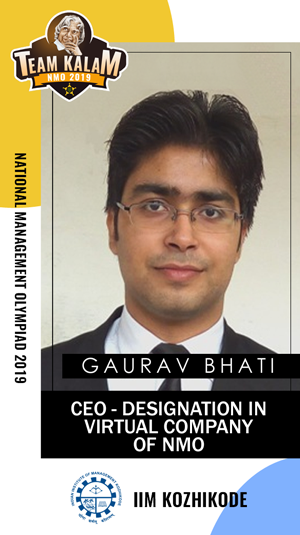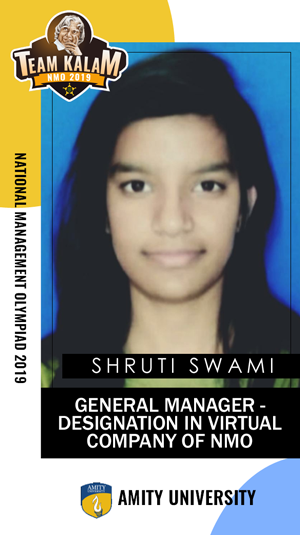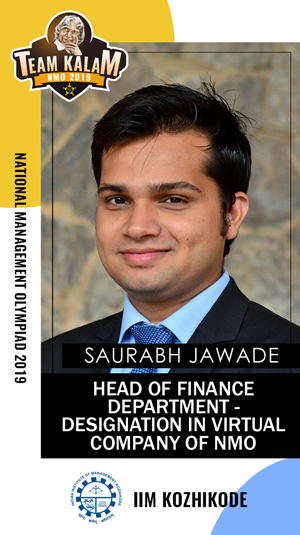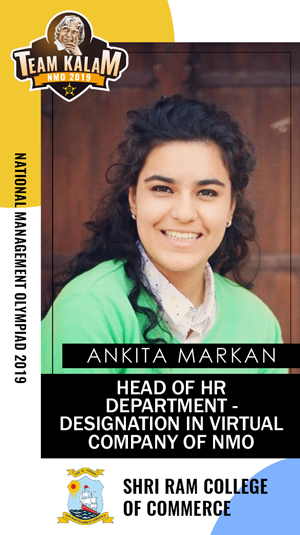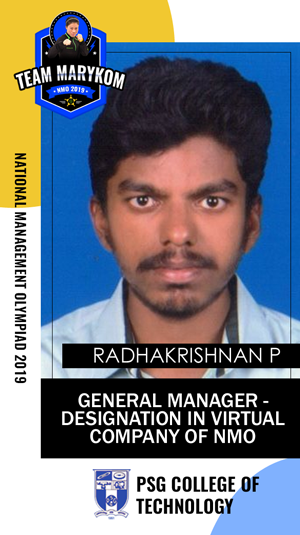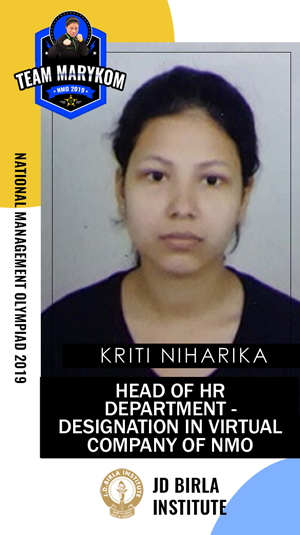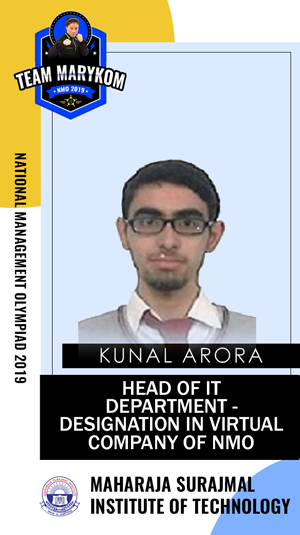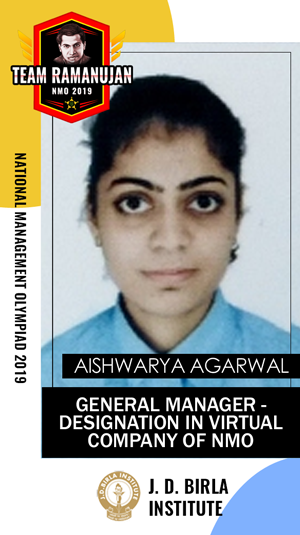- Home
- About
- Heritage
- NMO Season 4 (Year 2021)
- NMO Season 3 (Year 2021)
- NMO Season 2 (Year 2020)
- NMO Season 1 (Year 2019)
NMO Season 4 (Year 2022)
NMO Season 3 (Year 2021)
NMO Season 2 (Year 2020)
- NMO Season 5
- FAQ
- Knowledge Base
Any Query?
Call Now: on +91 120 424 1617
Call Now: on +91 120 424 1617

National Management Olympiad is an Initiative of Federation of Industrial Education.
A-105, Logix Technova, Plot A-4 Sector-132, Noida (U.P.) 201304, India [email protected]
Open in Google MapsBusiness Case (Semi Final) - NMO 2019
A Dilemma with ADHAAR
Overview
India is a Nation of 1.4 Billion people, according to Government of India 22% of Nation’s population lives below poverty line, Distributing government subsidies was a Inefficient process, during distribution of government benefits / subsidies, most part of subsidies was not reaching to bottom of the pyramid. Also identification of citizens on a common platform was required to facilitate inclusion. In India, proof of identity facilitates inclusion in several ways. Proof of identity can enable individuals to access social welfare programs. A number of these programs involve the transfer of cash to beneficiaries in order to meet the costs of household needs. Proof of identity also enables individuals to access banking services, including the ability to open a savings account or send remittances. Proof of identity is also a widespread requirement to register children for school in India, which turns a lack thereof into an important concern for many families. Having a government issued, widely-recognized proof of identity can also help marginalized individuals, notably migrants, avoid harassment by the police. This can also help to curb illegal migration from neighboring countries where porous border has facilitated illegal migrants and criminal activities tremendously.
Prior to 2010, the landscape of identification in India was fragmented. Forms of identification that are more widely accepted as proof of identity, including passports and Permanent Account Number (PAN) cards, were held only by a relatively small number of individuals. By contrast, the more widely held identification documents – ration cards, National Rural Employment Guarantee Act (NREGA) cards, and voter ID cards - have more limited utility. The utility of ration cards, NREGA cards, and voter identification cards are limited by their lack of portability, there was an urgent requirement of powerful tool for inclusion & identification.In India, the portability of common identification documents can be limited by geography or by the purpose of a document. Many individuals in India are unable to use their ration cards, NREGA cards, and voter identification cards outside the state in which the document was produced, limiting their geographic portability. Voter identification cards can also have limited functional portability, as they may not be accepted as proof of identification for some purposes beyond voting. Fraud is also widespread among identification documents in India. Due to concerns about fraud, PAN cards, voter identification cards, and ration cards may be refused.
Central government sought to create an identification system that would be used throughout the country – serving as a foundation for the provision of services and benefits. For individuals, an Aadhaar number offers proof of identity that is accepted across states and union territories by a wide number of service providers. For the government and other service providers, Aadhaar's biometric de-duplication was designed to help prevent duplicate payments, leakage, and other sources of fraud.
Based on the projected population for 2015, 89.6 percent of India’s population has been enrolled.
Apart from all its successes ADHAAR is also Facing some challenges
On September 26, 2018, India's Supreme Court issued a landmark decision in the case against the Aadhaar system. The September 2018 decision ruled that the Aadhaar program was constitutional, deciding that the benefits of its use in government programs outweighed the risks. Government use of the Aadhaar system, when combined with stricter data protection, was constitutional.
But the decision did not approve all aspects of the Aadhaar system. It struck down certain extensions of the basic Aadhaar program, particularly the private firms' requirement that individuals provide Aadhaar data for authentication. The decision ruled that Aadhaar numbers could not be mandated for school admissions, or opening bank accounts, or linking to mobile numbers. This challenged the growing use of Aadhaar by many private sector organizations, including telecommunications, banking and other financial services, schools, and other sectors.
Assignment:
Keeping above facts in perspective,Your organization is a consulting agency for Government of India and you need to address below concerns
A)- To increase usability and easiness without compromising privacy of an individual.
B)- Come-Up with your innovative plan to Increase reach of ADHAAR & completely cover India's Population especially in remote parts of country where technology access is nil.
C)- Make ADHAAR’s financial model to be a self-sustaining & independent, so that it can help to fund its own development projects, technologies enhancements, R&D, etc without being government dependent.
D)- Restructure current ADHAAR HR Policy to avoid fraudulent activities done due to loopholes in recruitment process and presence of mischievous elements


